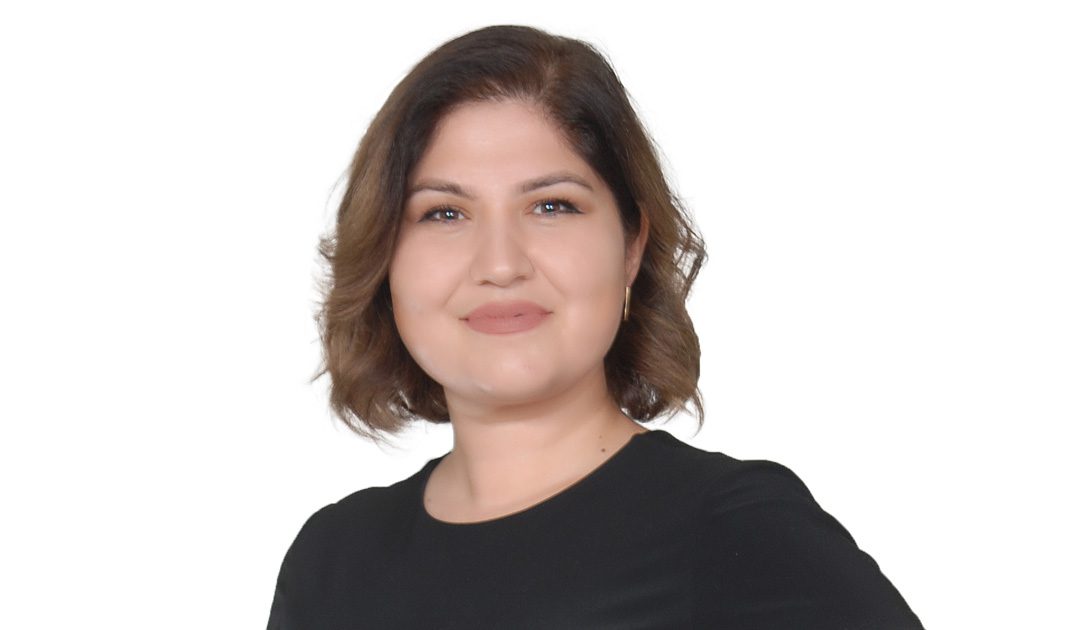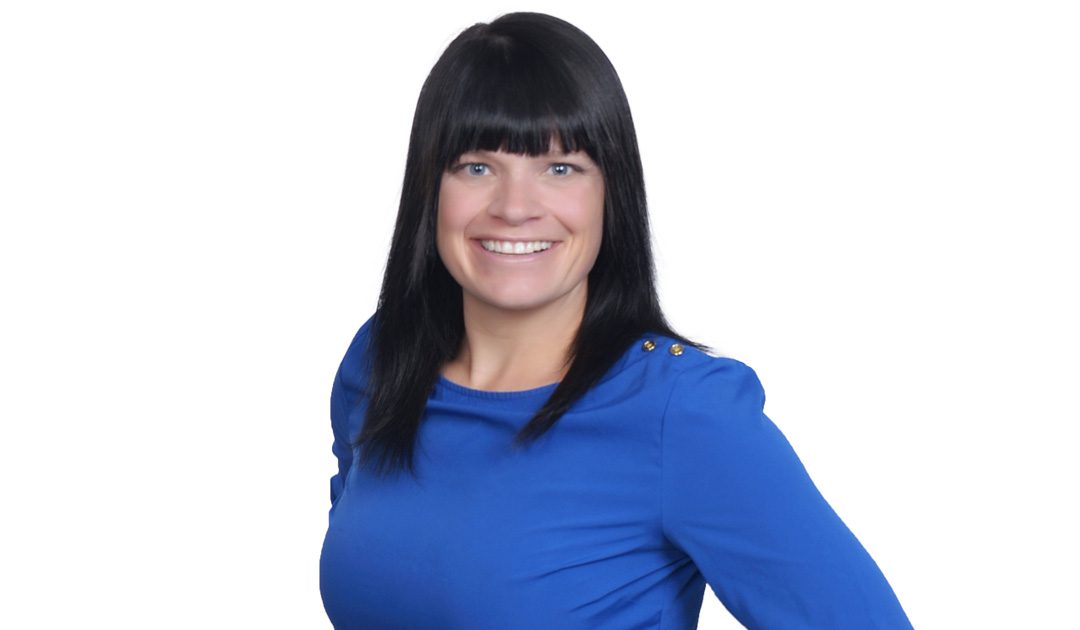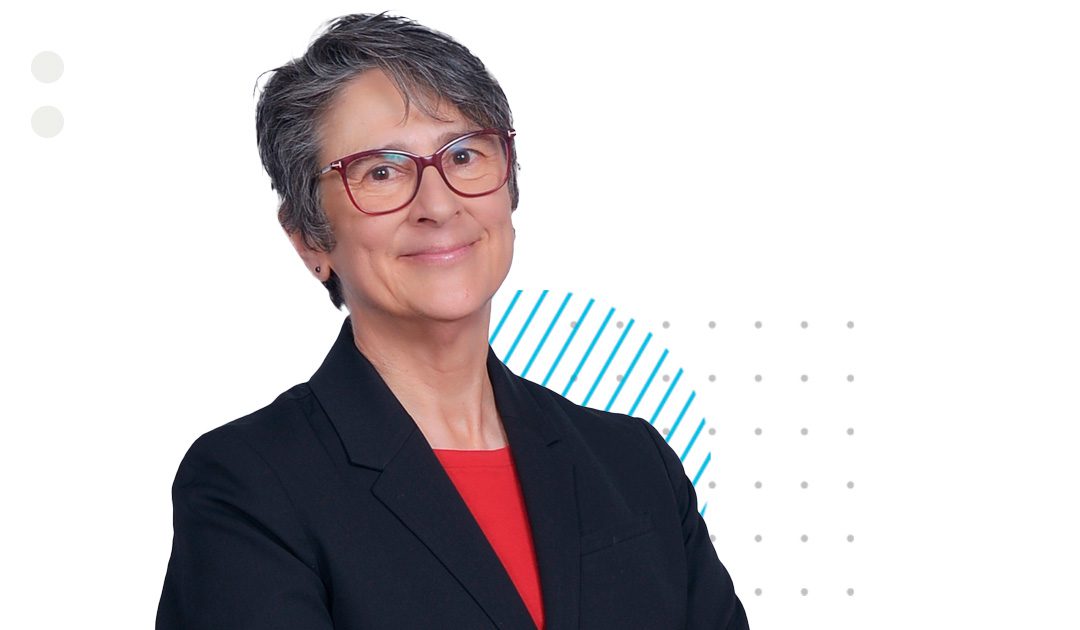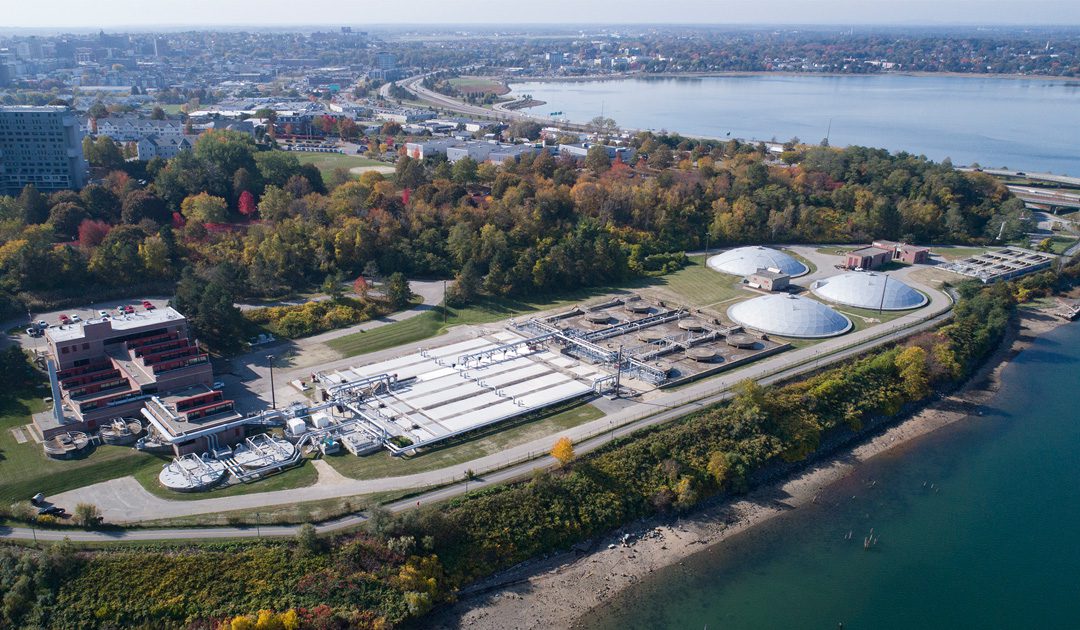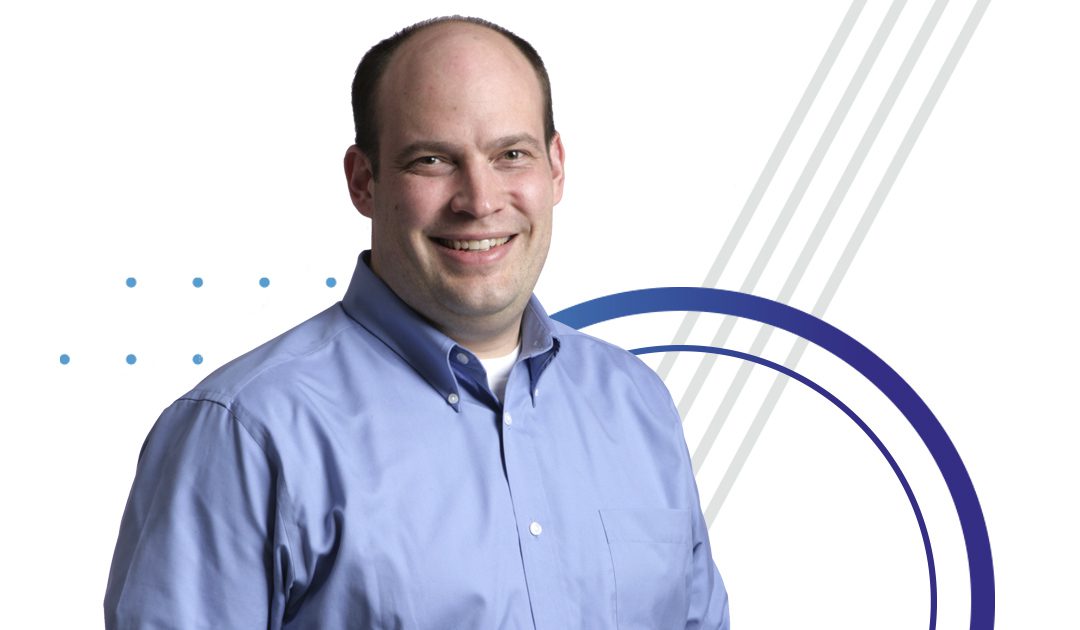WALNUT CREEK, Calif. — Brown and Caldwell today announced it is expanding its funding and finance group as highly experienced Seema Chavan joins the firm as vice president and senior director of strategic funding.
With a 20-year background in the water and wastewater industry, Chavan is uniquely skilled in partnering with public utilities to identify, strategize, and secure federal, state, and local low-interest loan and grant opportunities. She has helped obtain $800 million in funding from the EPA, Bureau of Reclamation, FEMA, USDA, Clean Water/Drinking Water State Revolving Fund, and various state programs for numerous multimillion-dollar capital improvement programs. Her expertise includes the development of grant strategies, directing applications, coordinating with funding agency staff, supporting advocacy, managing program compliance requirements, and assisting agencies with reporting and disbursement requests.
In her new role, Chavan will lead Brown and Caldwell’s funding and finance group, leveraging her experience as a professional engineer and deep knowledge of complex environmental projects to help clients secure financial aid for public water infrastructure projects. She will review projects to identify funding mechanisms, advise on project scoping to maximize funding opportunities, and work directly with clients to select and apply for economic assistance. Furthermore, she will provide counsel on how federal, state, and local funding could increase clients’ financial capabilities.
“I am thrilled to welcome Seema to Brown and Caldwell. Her expertise will play a key role in helping water and wastewater agencies understand and position for outside project funding while reducing the financial burden on their customers.”
Chief Growth Officer Geoff Grant
Based in San Jose, California, Chavan holds a master’s degree in environmental engineering and a bachelor’s degree in civil engineering.
ROSEVILLE, Calif. — In a significant milestone, the City of Roseville has embarked on a groundbreaking initiative to decrease greenhouse gas emissions and minimize landfill waste. This effort involves powering its trash and recycling fleet with renewable natural gas (RNG) derived from the digestion of organic waste.
The regional Pleasant Grove Wastewater Treatment Plant (PGWWTP) is owned and operated by the city where the plant efficiently treats millions of gallons of wastewater daily, safeguarding the health of local streams and rivers. In addition, it plays a crucial role in benefiting the community by supplying more than half of the one billion gallons of recycled water the city delivers annually for landscaping and industrial purposes.
The PGWWTP expansion has been under construction since 2020 to increase treatment capacity from 9.5 million gallons to 12 million gallons of wastewater per day to accommodate regional population growth. As part of the expansion, Roseville has developed an energy recovery project to transform the plant into a waste-to-energy facility capable of producing RNG fuel.
“We have come full circle with managing our integrated utility service to benefit our community. Through this project, we have the opportunity to generate environmentally beneficial by-products, mitigate the impacts of climate change, comply with regulatory obligations, and safeguard the interests of our ratepayers by stabilizing fuel costs for our solid waste fleet.”
Roseville’s Environmental Utilities Director, Richard D. Plecker
To bring Roseville’s energy recovery vision to reality, the city hired leading environmental engineering and construction services firm Brown and Caldwell to design the innovative renewable biofuel production facility to coincide with expansion works.
The city installed two new anaerobic digesters at the plant to stabilize wastewater solids generated in the treatment process and generate a sustainable fuel source. A receiving facility was constructed to accept high-strength organic wastes (fats, oils, and greases) directly into the anaerobic digesters, maximizing digester gas production for RNG conversion and diverting up to 12,000 tons of high-strength organic waste per year from landfill. Four microturbine cogeneration units produce electricity to help power the gas conversion process and provide heat for the anaerobic digesters.
By running its solid waste collection fleet (approximately 47 trucks) via a new on-site RNG fueling facility and ceasing diesel use, the city will reduce greenhouse gas emissions by about 7,000 metric tons of CO2 equivalents per year, equal to planting more than 270,000 trees. It will also earn credits through the Low Carbon Fuel Standard program as it lowers NOx emissions by five metric tons per year.
Furthermore, generating electricity with microturbines made the project eligible for the Clean Water State Revolving Fund Green Project Reserve, which incentivizes projects that address water or energy efficiency and reduces costs for utility customers.
“We applaud the city for its vision and follow-through in transforming its wastewater treatment process into a highly sustainable, energy-efficient operation,” said Brown and Caldwell Vice President Adam Ross. “Our team is honored to help position Roseville as a model waste-to-energy pioneer by improving the environmental and financial sustainability of the Pleasant Grove Wastewater Treatment Plant.”
###
About the City of Roseville
The City of Roseville is the largest city in Placer County and is called home to 145,000 people and an array of businesses. Roseville owns and operates most municipal services, including police, fire, electric, water, wastewater, and solid waste utilities, public works, transit, parks, and libraries. For more information, visit Roseville.ca.us
WALNUT CREEK, Calif. — Leading environmental engineering firm Brown and Caldwell today announced that industry leader Pam Elardo has joined the company as a senior advisor to help water and wastewater agencies overcome the challenges facing the utility of the future.
With four decades of environmental engineering experience, Elardo has served as a public sector executive responsible for leading large-scale, complex wastewater utilities to protect public health and the environment. She has managed organizations with annual multimillion-dollar capital and operating budgets and directed optimization efforts at utilities operating more than a dozen wastewater resource recovery facilities (WRRF), creating clean water and valuable resources from billions of gallons of wastewater daily.
Earlier in her career, Elardo gained valuable operational experience from roles that included WRRF plant manager, asset management program leader, and environmental regulator implementing the Clean Water Act. Passionate about water and equity, she has been involved with international non-profit organizations serving communities facing dire water and sanitation issues.
As a senior advisor within Brown and Caldwell’s utility performance practice, Elardo will leverage her experience and connections to create sustainable and equitable improvements in clients’ organizations while boosting the firm’s reputation as a technical leader in utility optimization. She will identify and develop solutions to help utilities navigate evolving environmental regulatory and climate challenges, optimize business practices, and create strategic plans to build resilient systems ready to address and be successful in the face of present and future stressors.
“I am delighted to welcome a renowned leader of Pam’s stature. Her vast experience will help our utility clients improve operational efficiency and solve complex challenges to maintain essential water and sanitation services for communities.”
Brown and Caldwell Chief Technical Officer Wendy Broley
Based in Seattle, Washington, Elardo is a licensed professional engineer, a certified wastewater treatment plant operator, and holds a master’s degree in environmental engineering and a bachelor’s degree in chemical engineering.
PORTLAND, Maine — The Portland Water District (PWD) is exploring options for an advanced regional facility to treat PFAS-contaminated biosolids. Solutions being explored include advanced thermal destruction technologies, such as pyrolysis and gasification, to safely and economically reduce or eliminate PFAS from biosolids.
At its four wastewater treatment facilities (WWTFs), PWD treats wastewater to produce clean water and biosolids. The clean water is released into receiving waters, and the biosolids are treated, then transported to landfills.
In the past, biosolids were used as a fertilizer and soil amendment as they contain essential nutrients and organic matter for plant growth. Under Maine law LD 1911, the state banned the spread of biosolids due to the presence of PFAS, a complex group of manufactured chemicals found in everyday consumer and industrial products, including cleaning and personal care products. Deemed “forever chemicals” for their ability to remain intact in the environment over time, PFAS have been detected in soil, air, and discharges to wastewater systems. Scientific research is ongoing to determine adverse health outcomes resulting from high levels of PFAS exposure.
Banning biosolids from being used as a fertilizer created a disposal challenge. It made landfills the primary disposal option. However, biosolids need to be mixed with another bulking material in a 5-to-1 or greater ratio to make them suitable for landfills. And, only certain landfills in Maine have the capacity to accept this type of waste. The major disposal landfill, the state-owned Juniper Ridge Landfill, has reduced the amount of biosolids it receives from Maine’s WWTFs. Subsequently, Maine’s biosolids are now being trucked to landfills outside the state, and often to Canada.
To sustainably and safely manage biosolids, PWD is finding solutions to reduce quantities produced, lower hauling and disposal costs, and explore beneficial use options. A solution under consideration is constructing a regional facility using advanced thermal destruction technologies, such as pyrolysis and gasification, to safely and economically reduce or eliminate PFAS.
“The safe disposal of biosolids is critical to safeguarding the environment and protecting public health. We are leaving no stone unturned as we seek innovative and economical solutions to tackling the nationwide threat of PFAS.”
PWD Director of Wastewater Services Scott Firmin
PWD is working with the environmental consulting firm Brown and Caldwell, which is developing a conceptual plan and vetting prospective technologies. One such solution under consideration is pyrolysis and gasification, the chemical decomposition of organic materials via heat application to produce fuel-rich off-gas and valuable, environmentally-safe biochar. By using thermal oxidation, the off-gas can be reused as the heat source or to generate power. In tandem, these processes can potentially destroy PFAS to alleviate concerns with biochar reuse or air emissions.
LOS ANGELES — A joint venture of AECOM and Brown and Caldwell (AECOM-BC Team) has been chosen to provide program and project management support and engineering design services for the Pure Water Southern California program, one of the largest water reuse programs in the world.
The innovative program, being developed by the Metropolitan Water District of Southern California (Metropolitan) in partnership with the Los Angeles County Sanitation Districts (Sanitation Districts), will produce up to 150 million gallons of high-quality, purified water per day for up to 15 million people.
Anticipated for water delivery by 2032 and potentially earlier, the program will reuse the largest untapped wastewater source in the region that currently flows to the ocean to increase water resiliency, enhance water quality, and fuel economic growth. It will lower Southern California’s reliance on imported water supplies from the Colorado River and Sierra Nevada and replenish groundwater basins while leveraging cutting-edge research and development to increase regional water reuse.
Along with the partnership between Metropolitan and the Sanitation Districts, the venture also involves Metropolitan member agencies, groundwater basin managers, and water agencies in Arizona and Nevada, sharing the goal of creating a sustainable water future for California and the Southwest. Furthermore, the program will receive $80 million in state funding following legislation signed by Gov. Gavin Newsom committing to financially supporting critical water projects.
“Despite the recent rainstorms and record levels of snowpack this past winter, we know we must adapt to the climate whiplash that is putting an incredible strain on all of our water resources. Together with investing in our water system, storage, conservation, and other local sources of supply, the Pure Water Southern California program will be pivotal in meeting future water demands while delivering a resilient water supply regardless of the weather.”
Metropolitan General Manager Adel Hagekhalil
The AECOM-BC Team will lead environmental compliance efforts and the design and construction of advanced purification facilities at the Sanitation District’s Joint Water Pollution Control Plant (JWPCP). The new facilities will incorporate an innovative 3-step procedure to purify water, including membrane bioreactors, reverse osmosis, and an ultraviolet light/advanced oxidation process. Up to 60 miles of new pipelines and associated pump stations will be designed and constructed to transport purified water from the JWPCP to the region’s groundwater basins, industrial facilities, and two of Metropolitan’s water treatment plants.
“We applaud Metropolitan and the Sanitation Districts for its unwavering commitment to strengthening water supply resiliency,” said Brown and Caldwell CEO Rich D’Amato. “The AECOM-BC Team is proud to support this landmark program which represents a leap forward in water recycling technology and innovation for the benefit of communities for generations to come throughout the Colorado River Basin.”
The team is joined by 20 local, small, and minority firms that will deliver a range of services on behalf of the project. Additionally, the program has the potential to generate approximately 50,000 jobs and stimulate billions of dollars in economic output during construction and operation, further invigorating Southern California’s economy.
“AECOM and Brown and Caldwell’s 40-year history of delivering for Metropolitan, work on other pure water projects, and relationships with local communities prepare us to collaborate with numerous jurisdictions and agencies to bring this complex yet critical program to completion,” said Drew Jeter, chief executive of AECOM’s program management global business line.
At the Water Replenishment District’s Leo J. Vander Lans Advanced Water Treatment Facility in Long Beach, California, a new inland injection well will improve drought resiliency and replenish local groundwater supplies to further establish water independence for four million Los Angeles County residents. The project was made possible in part due to a $1.5M grant from PepsiCo as part of its PepsiCo Positive ambition, which includes the aim to reduce water use and replenish more than 100% of the water it uses in high-risk watersheds.
Hear from our experienced, fun, and passionate Los Angeles team about the many reasons why it’s an exciting time to take the next step in your career and join us. You can make an impact on our Southern California community by working to rehabilitate a section of a critical water artery serving one of the region’s largest groundwater basins or studying and planning for equitable water access amid historic drought.
Find your dream job with BC’s growing team in Los Angeles. Stop dreaming and check out our open positions today:
Learn more about BC’s culture of diversity and inclusion, competitive benefits, and how we invest in the growth of our employees. Not quite ready to make a change? Join our talent community to be the first to hear about our open positions.
LOS ANGELES — Leading environmental engineering and construction services firm Brown and Caldwell has been hired by the Metropolitan Water District of Southern California (Metropolitan) to study alternative water conveyance options to provide supply diversity to the region during severe droughts.
Metropolitan’s mission is to ensure a safe and reliable water supply for the 19 million people in Southern California in the face of climate change and extended drought.
In response to drought action planning by Metropolitan in collaboration with its 26 member agencies, the study will identify and evaluate potential conveyance options to move primarily Colorado River water and regional storage supplies from the eastern portion of Metropolitan’s service area to the western portion.
The western portion of the service area includes member agencies that depend heavily on the California State Water Project (SWP), a multi-purpose water storage and delivery system that extends more than 705 miles. SWP-dependent member agencies in the west include the Las Virgenes Municipal Water District, the Calleguas Water District, and the Los Angeles Department of Water and Power, served primarily by Metropolitan’s Jensen Water Treatment Plant.
Presently, there is inadequate pipeline connectivity and operational flexibility between imported water supplies and storage options and a lack of water resource diversity for Metropolitan to satisfy the needs of all member agencies equitably, especially during a severe shortage of SWP supplies.
As the largest single contractor of the SWP and a major supporter of Southern California water conservation and recycling programs, Metropolitan seeks feasible alternatives to convey Colorado River Aqueduct supplies or Diamond Valley Lake storage from the eastern portion of its service area or purified water from Pure Water Southern California to SWP-dependent area agencies in the western portion of its service area.
The study will identify new conveyance options and the potential use of existing pipelines, including required pumping stations. With drought conditions heightened by climate change in mind, the study will consider new additions and modifications to Metropolitan’s infrastructure system to address varying supply scenarios.
“This important study aligns with Metropolitan’s commitment to providing reliable water supplies to the entire region.”
Brown and Caldwell Vice President Steve Hirai
VANCOUVER — Leading environmental engineering and construction services firm Brown and Caldwell today announces the promotion of Vice President Dave Bergdolt to Western Canada area leader, effective immediately. Bergdolt brings three decades of water and wastewater infrastructure and treatment experience to help clients in the region overcome environmental and water-related challenges.
Having joined the firm 15 years ago, Bergdolt has led numerous highly technical projects from conceptual planning through construction and startup. Projects have included wastewater facility expansions and upgrades, water quality improvements, sustainable water supplies, and sewer system rehabilitation.
As Western Canada leader, Bergdolt will augment the firm’s 60-year history of planning and engineering services for the Lower Mainland’s water and environment sector. In addition to developing Vancouver’s original sewerage plan in 1953, the Rawn Report, projects by the firm include upgrades to the world’s largest trickling filter solids contact wastewater facility and supporting the development of Vancouver’s Healthy Waters Plan.
He will be responsible for operations management, driving new client growth, and expanding the firm’s regional presence to meet market and customer needs. In alignment with Brown and Caldwell’s commitment to First Nations opportunities, he will advocate First Nation engagement on projects within British Columbia and Western Canada to provide contracting and economic development opportunities.
Furthermore, Bergdolt will oversee the hiring and advancement of top talent and strengthen Brown and Caldwell’s reputation as the place to work on the most complex environmental engineering projects.
“Dave’s leadership, experience, and client-centric focus will be key to the continued growth of our Canada business. His deep knowledge will be an asset to our clients and people as we work together to positively impact our communities.”
Brown and Caldwell Senior Vice President Steve Anderson
